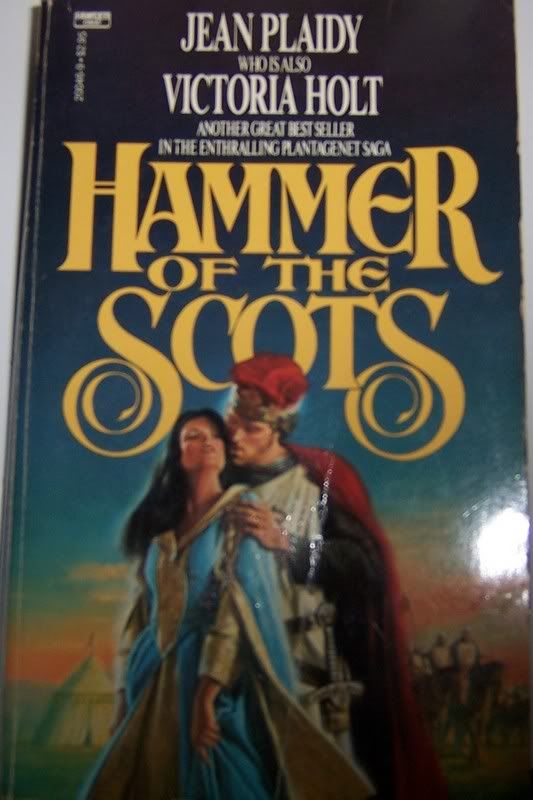Murder Most Royal (Anne Boleyn and Katherine Howard)
The Queen's Confession (Marie Antoinette, written as Victoria Holt)
Sweet Lass of Richmond Hill (Maria Fitzherbert)
Indiscretions of the Queen (Queen Caroline)
Regent's Daughter (Princess Charlotte)
Myself My Enemy (Henrietta Maria)
The Pleasures of Love (Catherine of Braganza)
(I suppose one day I should really try reading a book that's not about a royal woman . . .)
Anyway, I've started reading The Haunted Sisters (about James II's daughters Mary and Anne), and am so far finding it very entertaining, especially in its depiction of Sarah Churchill, who's both thoroughly disagreeable and rather fun to read about. I'll be saying more about it in 2007.
In the meantime, I'll leave you for 2006 with this cover from a 1983 edition of Plaidy's novel about Edward I and his family, Hammer of the Scots. Here we see the king taking a well-deserved break from his military preoccupations to nibble his wife's ear.

Happy New Year!



